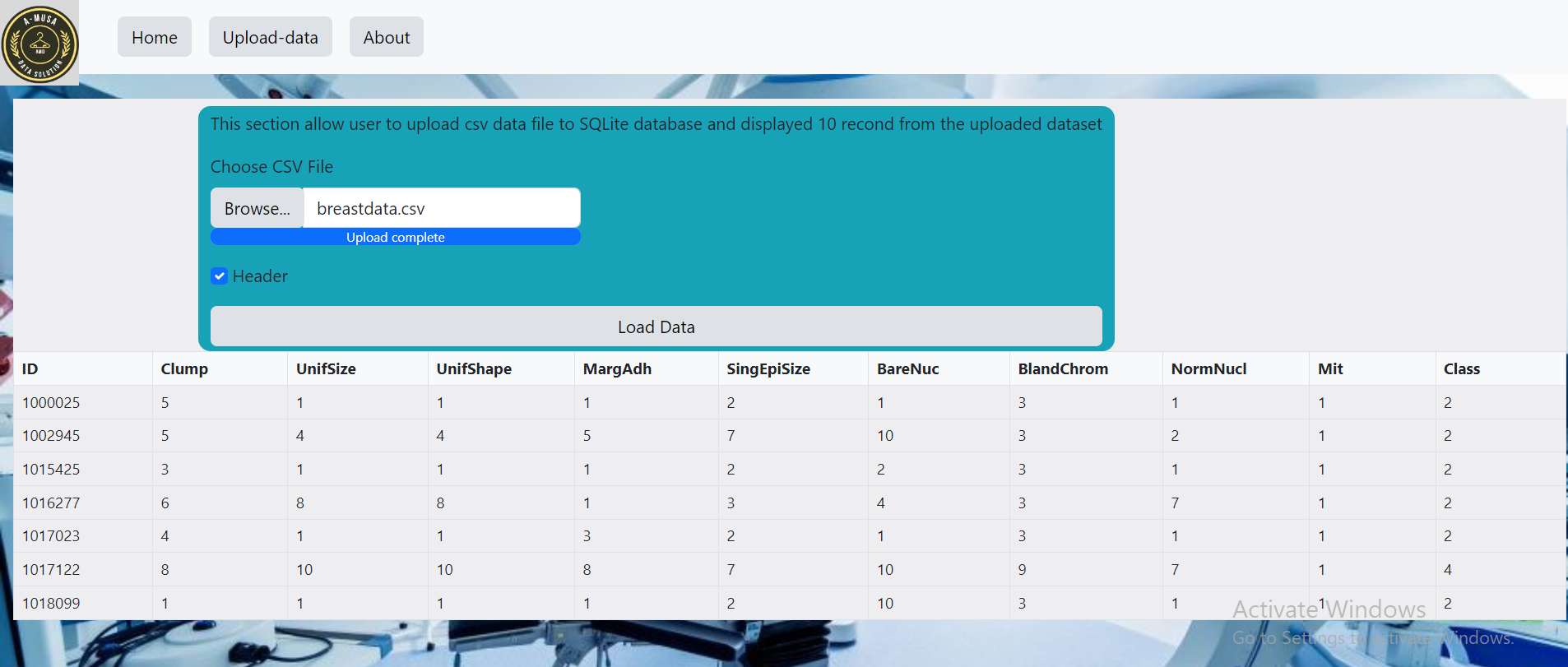Democratizing Machine Learning with User-Friendly Interfaces for Breast Cancer Prediction to Improved Patient Outcomes Using Shiny for Python
Introduction: Breast cancer remains a significant global health concern, affecting millions of women worldwide. Early detection and accurate diagnosis are crucial for improving patient outcomes. Machine learning (ML) has emerged as a powerful tool in the fight against breast cancer, enabling the prediction of benign or malignant tumours with high accuracy. Machine learning (ML) has revolutionized various industries, transforming data into actionable insights. However, building and deploying ML models often requires extensive technical expertise, limiting its accessibility to non-technical users. This is where user-friendly ML interfaces play a crucial role in democratizing ML.
Benefits of User-Friendly ML Interfaces in Shiny App:
Enhanced Accessibility: User-friendly interfaces make ML more approachable for non-technical users, enabling them to leverage the power of ML without extensive coding knowledge.
Improved Model Explain ability: Visual representations and interactive elements within UIs enhance model explainability, allowing users to understand how the model makes decisions.
Simplified Model Deployment: UIs can streamline the process of deploying ML models into production, making it easier for non-technical users to integrate ML into their workflows.
The Role of Machine Learning in Breast Cancer Prediction: ML algorithms can analyze vast amounts of patient data, including medical history, clinical findings, and imaging results, to identify patterns and relationships associated with breast cancer. By training ML models on these datasets, we can develop predictive models capable of classifying new patients as having either benign or malignant tumours.
Machine Learning offers several advantages in breast cancer prediction:
High Accuracy: ML models can achieve high accuracy in predicting breast cancer diagnosis, providing valuable insights for clinical decision-making.
Pattern Recognition: ML algorithms can identify complex patterns and relationships in data that may not be apparent to human experts, leading to more comprehensive insights.
Continuous Improvement: ML models can continuously learn and improve as new data becomes available, ensuring they remain up-to-date with the latest medical knowledge.
The Role of Machine Learning in Breast Cancer Prediction: ML algorithms can analyze vast amounts of patient data, including medical history, clinical findings, and imaging results, to identify patterns and relationships associated with breast cancer. By training ML models on these datasets, we can develop predictive models capable of classifying new patients as having either benign or malignant tumours.
This App uses the following ML algorithms:
Logistic Regression: Logistic regression is a statistical model that predicts the probability of a binary outcome, such as benign or malignant tumour classification.
Support Vector Machine (SVM): SVM is a supervised learning algorithm that finds the optimal hyperplane to separate data points into two classes.
Decision Tree: Decision trees build a tree-like structure to classify data points based on a series of rules and decision nodes.
Random Forest: Random forest combines multiple decision trees to improve classification accuracy and reduce overfitting.
Gradient Boosting: Gradient boosting sequentially builds an ensemble of models, where each subsequent model focuses on improving the prediction errors of the previous models.
Improving Patient Outcomes with this Machine Learning App: The accurate prediction of breast cancer using ML can significantly improve patient outcomes by:
Early Detection: Early detection of breast cancer enables timely treatment and intervention, improving survival rates and reducing the risk of complications.
Personalized Treatment Plans: ML models can provide valuable insights for personalized treatment plans, tailoring therapy to each patient’s characteristics and risk factors.
Reduced Misdiagnosis: ML models can assist Doctors in reducing misdiagnosis rates due to the high volume of patients by ensuring that patients receive the appropriate care and treatment.
Improved Patient Counseling: ML-based predictions can inform patient counselling, providing patients with a better understanding of their individual risk factors and treatment options.
Conclusion: Machine learning has revolutionized the field of breast cancer prediction, offering powerful tools for early detection and improved patient outcomes. By leveraging ML algorithms, we can enhance diagnostic accuracy, personalize treatment plans, and reduce misdiagnosis rates, ultimately contributing to improved survival rates and a better quality of life for breast cancer patients.


